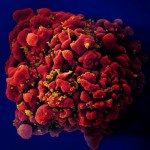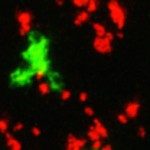Link to Pubmed [PMID] – 30936262
Link to DOI – 10.1084/jem.20182375
J Exp Med 2019 05; 216(5): 1038-1049
CAR T cells represent a potentially curative strategy for B cell malignancies. However, the outcome and dynamics of CAR T cell interactions in distinct anatomical sites are poorly understood. Using intravital imaging, we tracked interactions established by anti-CD19 CAR T cells in B cell lymphoma-bearing mice. Circulating targets trapped CAR T cells in the lungs, reducing their access to lymphoid organs. In the bone marrow, tumor apoptosis was largely due to CAR T cells that engaged, killed, and detached from their targets within 25 min. Notably, not all CAR T cell contacts elicited calcium signaling or killing while interacting with tumors, uncovering extensive functional heterogeneity. Mathematical modeling revealed that direct killing was sufficient for tumor regression. Finally, antigen-loss variants emerged in the bone marrow, but not in lymph nodes, where CAR T cell cytotoxic activity was reduced. Our results identify a previously unappreciated level of diversity in the outcomes of CAR T cell interactions in vivo, with important clinical implications.



